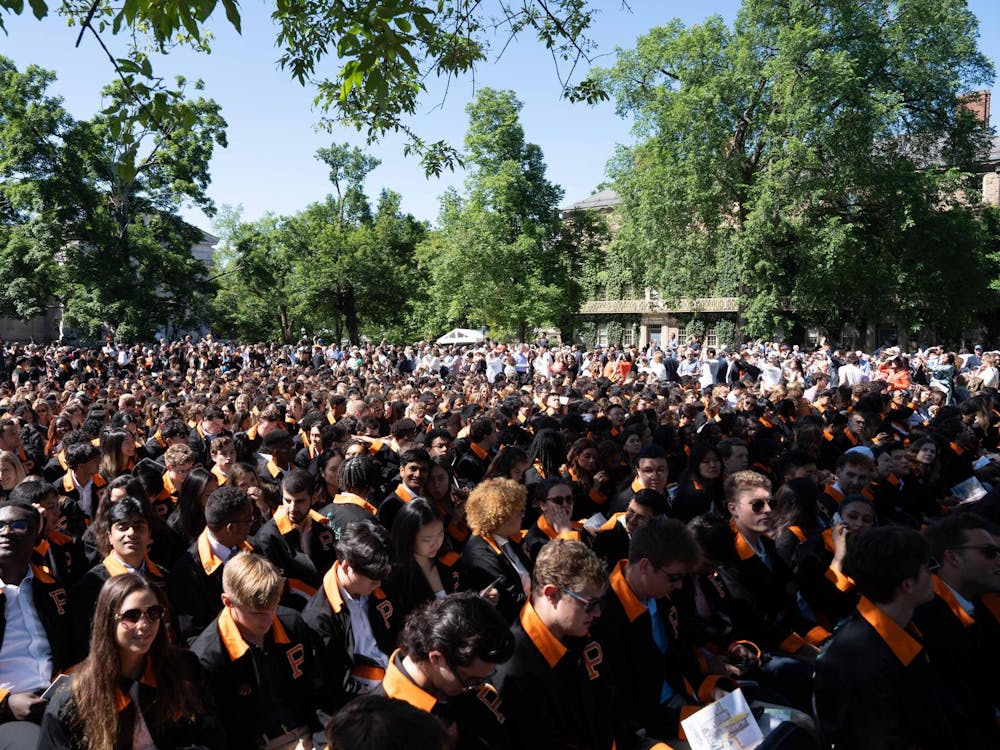Since the full implementation of coeducation in 1972, the size of a typical Princeton class has not changed. But over the same time period, the annual number of applicants has nearly doubled and faculty size has increased at an average rate of one percent per year, decreasing the 8-to-1 student-faculty ratio of the mid-'70s to today's ratio of just over 6-to-1. Even since 1990, the total endowment per student has grown from $400,000 to $600,000 with the dollar valued as it was in 1990.
In response to these statistics, the Wythes committee has proposed increasing the size of each academic class by 125 students and the overall size of the student body by 500 students. But why should we want to counter those statistical trends at all? The trustees' justification for the proposal seems to be that change is due, and this is not a good enough reason.
The Wythes report explains, "If an institution does not evolve, it cannot retain either its distinction or its social relevance." The report comes as an effort to anticipate the changes that will be necessary for such evolution to occur, even though the committee admits that its predictions may not be accurate. As a result, the report offers little explanation for why increasing the student body size would be beneficial, other than to take advantage of an ever-growing applicant pool and to "make a greater contribution to the society [Princeton] serves." Instead, it focuses on explaining why the increase would not be detrimental. This is the wrong approach.
In many respects, the report does a fine job of dispelling doubts. It argues that normal faculty growth through 2004 will offset the increase in student population, that class sizes will not change, that the student-faculty ratio will remain approximately 7-to-1 and that precept size will remain around the 12-person target. With the exception of a new dorm and a new residential college, the committee anticipates no additional burdens on the University's physical plan or on space allocation. Nor would the additional students pose an increased financial burden, as the University budget consists primarily of fixed costs.
But then, having determined that the University could reasonably absorb additional students, the report explains, "In the end, it was not possible for the committee to determine with precision how many students would be 'too many.' And it seems that the answer is to some degree comparative, that is to say, relative to the size of other institutions with which students compare Princeton and with which Princeton compares itself." This comparative thread runs throughout the report, and it is a dangerous thread at best. Yes, Princeton is a competitive institution and must seek to match its peers in many respects. But one of Princeton's hallmarks is its small size, and many would argue that to have fewer students is a distinct advantage. The Wythes committee should not view relative size discrepancies as leeway for Princeton to admit more students. Rather than speaking in relative terms at all, Princeton should strive to be the best institution it can possibly be, independent of other institutions. And because its small size is counted as an advantage, it should work hard to protect that size.
Logic dictates that adding 500 students not only would work against the advantages of small size, but would also necessarily change the fundamental academic and social environments on campus. It is impossible to know whether such change will be positive or detrimental. To ensure a positive academic impact, the report admits that a modest faculty increase in high interest areas may prove necessary, and suggests that it will be critical for administrators to monitor the University's academic quality carefully.
The committee assumes the 500-student increase will have a positive social impact on the grounds that its proposal will help accommodate "the remarkable depth and quality of the applicant pool" — it hopes that more students will mean more diversity. But while additional students would have a tremendous effect on the University's ideological diversity, they would in no way help to improve cultural and ethnic diversity, which is a far more pressing concern. That problem stems from an inability to attract minority applicants at all, and merely adding students to the acceptance roster will not change the composition of the applicant pool.
Maybe the improvement in ideological diversity is enough to justify the proposal, but otherwise the Wythes committee offers few compelling reasons for increasing the student body size. Before any of its recommendations are adopted, I, at least, would like to see a stronger set of arguments for why they are right and necessary — not just for why they are not wrong. Alex Rawson is a history major from Shaker Heights, Ohio. He can be reached at ahrawson@princeton.edu.







